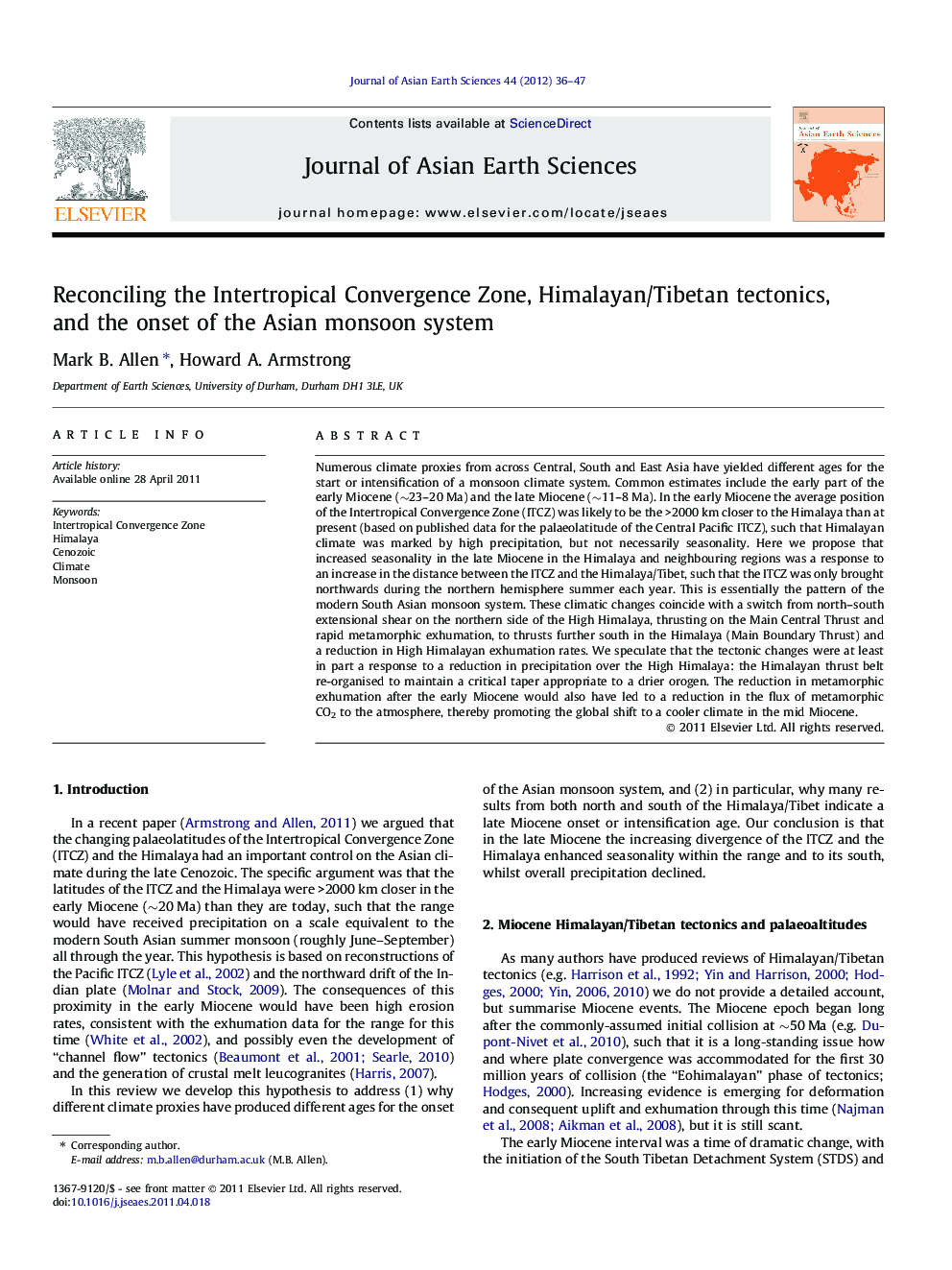| کد مقاله | کد نشریه | سال انتشار | مقاله انگلیسی | نسخه تمام متن |
|---|---|---|---|---|
| 4731644 | 1640420 | 2012 | 12 صفحه PDF | دانلود رایگان |

Numerous climate proxies from across Central, South and East Asia have yielded different ages for the start or intensification of a monsoon climate system. Common estimates include the early part of the early Miocene (∼23–20 Ma) and the late Miocene (∼11–8 Ma). In the early Miocene the average position of the Intertropical Convergence Zone (ITCZ) was likely to be the >2000 km closer to the Himalaya than at present (based on published data for the palaeolatitude of the Central Pacific ITCZ), such that Himalayan climate was marked by high precipitation, but not necessarily seasonality. Here we propose that increased seasonality in the late Miocene in the Himalaya and neighbouring regions was a response to an increase in the distance between the ITCZ and the Himalaya/Tibet, such that the ITCZ was only brought northwards during the northern hemisphere summer each year. This is essentially the pattern of the modern South Asian monsoon system. These climatic changes coincide with a switch from north–south extensional shear on the northern side of the High Himalaya, thrusting on the Main Central Thrust and rapid metamorphic exhumation, to thrusts further south in the Himalaya (Main Boundary Thrust) and a reduction in High Himalayan exhumation rates. We speculate that the tectonic changes were at least in part a response to a reduction in precipitation over the High Himalaya: the Himalayan thrust belt re-organised to maintain a critical taper appropriate to a drier orogen. The reduction in metamorphic exhumation after the early Miocene would also have led to a reduction in the flux of metamorphic CO2 to the atmosphere, thereby promoting the global shift to a cooler climate in the mid Miocene.
► Palaeolatitudes of the Pacific ITCZ and the Himalayas diverged through the Miocene.
► Himalayan climate changed to the modern South Asian monsoon in the Late Miocene.
► Himalayan tectonics may have adjusted to lower precipitation in the Late Miocene.
Journal: Journal of Asian Earth Sciences - Volume 44, 30 January 2012, Pages 36–47